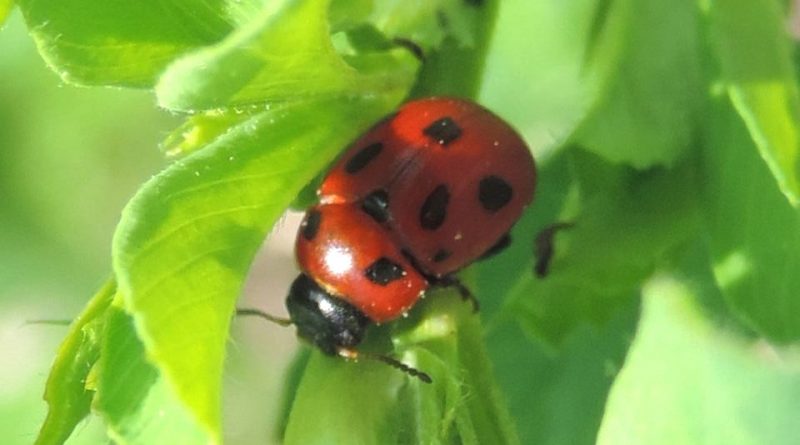Gonioctena fornicata
Gonioctena fornicata
Alfalfa chrysomela (Gonioctena fornicata (Brüggemann, 1873)) is a beetle belonging to the Chrysomelidae family.
Systematics –
From the systematic point of view it belongs to the Eukaryota Domain, Animalia Kingdom, Subarign Eumetazoa, Ramo Bilateria, Phylum Arthropoda, Subphylum Tracheata, Superclass Hexapoda, Classe Insecta, Subclass Pterygota, Cohort Endopterygota, Superorder Oligoneoptera, Section Coleopteroida, Suborder Coleopteroida, Order Cucujiformia, Chrysomeloidea Superfamily, Chrysomelidae Family, Chrysomelinae Subfamily and therefore to the Gonioctena Genus and to the G. fornicata Species.
Within this species, the subspecies is recognized:
– Spartoxena fornicata fornicata (Bruggemann, 1873).
The terms are synonymous:
– Phytodecta fornicata.
– Spartoxena fornicata.
Geographic Distribution and Habitat –
Alfalfa chrysomela is an insect widespread in a wide range which includes: Italy, southern Russia, Albania, Bosnia, Croatia, Czech Republic, Bulgaria, Greece, North Macedonia, Romania, Yugoslavia, southern Poland, Ukraine, Turkey and Caucasus.
The beetle feeds on leaves and tender stems of alfalfa and other forage legumes.
Morphology –
The adult of the Gonioctena fornicata is recognized for having dimensions, at the adult stage, of about 6-7 mm in length and with a livery with a black head, prothorax and red elytra; furthermore on the prothorax there are two black spots, while on the elytra there are five.
The larvae are yellow-gray in color, speckled with black specks on the back and sides and have 3 pairs of thoracic legs.
Attitude and Life Cycle –
The Gonioctena fornicata spends the winter as an adult, sheltered deep in the ground. This beetle, arrived in early spring, reappears in the adult stage.
After mating, the females generally lay their eggs on the underside of the leaves, in small groups.
The development of the larvae is completed in about 3-4 weeks and when they are mature they move to the ground and pupate. Flicker adults reach plants to feed on softer leaves and stems of alfalfa and other forage crops; after a short time they take refuge in the ground, where they will winter, to reappear in the following spring.
Therefore this species makes only one generation per year.
Ecological Role –
Both the larvae and the adults of alfalfa chrysomela, in conditions of high infestation, can cause damage as they feed by gnawing on the leaves and the most tender stems of alfalfa and other forages.
Normally chemical control with insecticides is not suggested, but tests have nevertheless been carried out. Unfortunately, the field application of Bacillus thuringiensis subs. tenebrionis (BtT) is not possible due to lack of registration (eg in Italy). The good efficacy of the BtT preparation on adults and larvae has been tested in the laboratory. Microbial control with BtT could be very useful in the open field of alfalfa, on the contrary chemical insecticides (eg Neonicotinoids, etc.) should be avoided due to the negative side effects on beneficial insects (very numerous in alfalfa).
In any case, we only intervene in case of serious infestations, against the wintering adults in March-April at the vegetative restart.
Guido Bissanti
Sources
– Wikipedia, the free encyclopedia.
– Russo G., 1976. Agricultural Entomology. Special Part. Liguori Editore, Naples.
– Tremblay E., 1997. Applied entomology. Liguori Editore, Naples.

